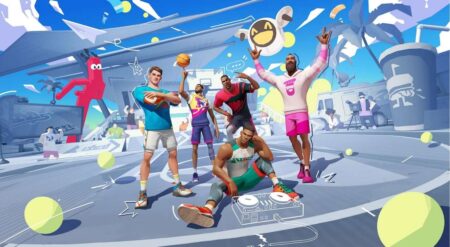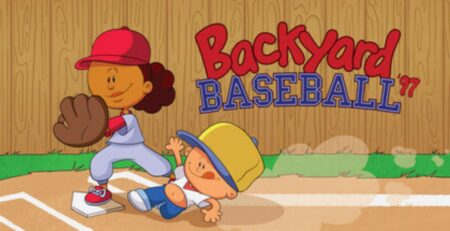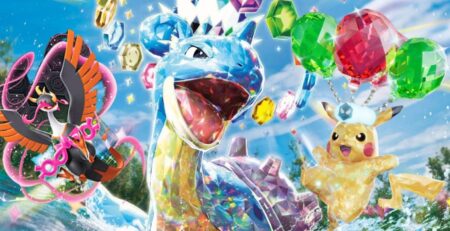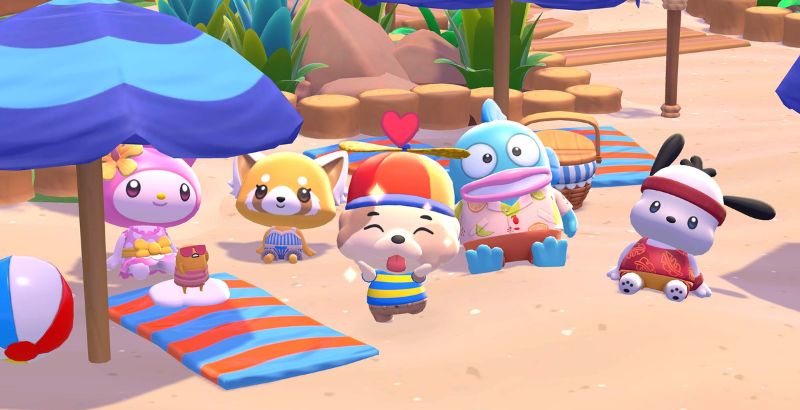Mario Kart Tour, a brand new mobile game published by Nintendo and developed by Nintendo and DeNA, quietly made its release on iOS and Android. The game was hotly anticipated as a free Mario Kart title, but its release was almost covert. Nonetheless, the new game is an interesting take on the classic Mario Kart formula perfectly translated for the oblong touch screen of a cell phone.
The typical formula for Mario Kart titles is to boast four cups, sets of four races each where the player competes in races against seven other racers to win the cup. Each race nets the player points based on how they place and the winner is based on the cumulative points across the four races. Winning cups on each of the difficulty levels, 50cc, 100cc, 150cc alongside other difficulties such as 200 cc and reverse cups in different Mario Kart games, would unlock new racers or karts. Mario Kart Tour takes all of these basic concepts and tweaks them slightly to match a more standard mobile style.
In Mario Kart Tour, the player begins with a very Mario Party-style bit where you launch a warp pipe and are randomly given your first racer. Initially, I was quite concerned. Part of the fun of Mario Kart is playing as any number of Mario characters and the thought of having to slowly and randomly unlock characters was not ideal. It is quite possible I never get to play as my dear Luigi.
This is partially because relaunching the warp pipe costs rubies, a currency slowly unlocked by a few means: buying them with real-life currency, leveling up your player by doing well in races, or completing daily or challenge tasks. My lack of Luigi is also in part because Mario Kart Tour does not have a set list of tours like other Mario Kart games. It has essentially rotating events every week where different characters, courses, and challenges are featured. Alas, Luigi is not one of the characters in the first week’s set.
These mechanics, of course, are standard for mobile games. The key to any good mobile game is creating an incentive for the player to come back daily and to continue playing the game long after its launch. On one hand, accruing rubies is not absurdly difficult.
Mario Kart Tour offers good variety, even it its free package.
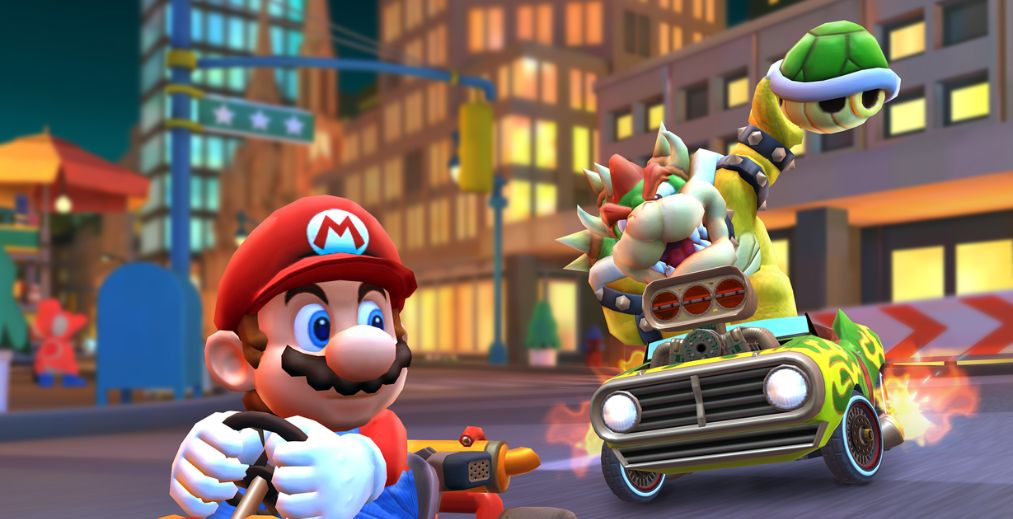
After only a few hours of playing, I had enough for ten launches, which netted me several more racers, karts, and gliders. Yet, even with the brief excitement of new unlocks, I was quickly disappointed by how few options I still felt like I had. On the other hand, getting that many rubies was not terribly difficult, especially because I won a large percentage of the races I partook in. More unlocks could easily be within my grasp.
There are currently already more than ten courses to race on and several different versions of each course. I am sure new events will lead to new courses. Plus, there is currently little incentive to repeat races you have already won. Every race has five Grand Stars to earn by racking up enough points during the race. Replaying races can help earn more Grand Stars, which are needed to unlock the next cup as well as periodic gifts containing anything from coins and rubies to glider unlocks.
Every race has three tiers for character selection. The one or two characters in the first tier receive massive point bonuses as well as extra items from item boxes and other seemingly unfair boosts for during the race. Since racers, karts, and gliders are randomly unlocked, it can make earning points or winning races at all seem unfair. However, since every race has different tier distributions, there is always at least one here and there that you have the right characters for.
While the structure of the game is a bit wonky at first, it did quickly endear itself to me. Each cup is made up of three races and a bonus game that, while they were probably going for the feel of the extra modes of main series titles, here, they are too easy and get repetitive quickly. They’re really just tutorials for different game mechanics.
Throughout the eight cups available to me at the time of this review, I felt a constant sense of progression. Every few races I was either acquiring gifts, stacking up rubies for warp pipe launches, or having new modes opened up to me. After the first four cups, I unlocked a mode a bit more akin to standard Mario Kart games.
One specific cup had a competitive cumulative point-based tournament added onto it. You are pitted against nineteen other players in a week-long competition to hold the most points across the races in the cup. At the end of the week, rewards are doled out based on your placement amongst your opponents.
Mario Kart Tour has simple controls.
After seven cups, the real fun begins with achievement-like challenges opened up for the unlocking. Each challenge nets the player either rubies or Grand Stars as well as badges that can be adorned on the player’s profile. There are some permanent ones as well as some event-tied challenges to ensure things stay fresh. The badges don’t do anything, but sometimes, it’s just nice to live life one dopamine spike at a time.
The controls for Mario Kart Tour are simple, but overall, pretty good. The standard controls, illustrated with a quick tutorial upon download, are just to swipe left and right to move and to swipe up or down to throw items. That is basically it. There is no acceleration, reverse, or break. There is a button to look behind you really quickly though. As long as you follow the tutorial’s instructions on where to place your finger to control the game, it plays quite smoothly for how tight the turns can sometimes be.
At first, I was worried that this simplicity would mean the game would be based more on luck than skill. I was so wrong though. Mario Kart Tour truncates many maps players know and love from other titles in the series while also shortening them to two laps each. This helps keep the games short and in accordance with mobile gaming habits. It also means that turns must be tighter than ever, drifts more exact, and the margins minuscule between driving around corners at too wide or too narrow.
While playing on iOS devices, it is possible to accidentally swipe too far to the left and trigger the phone’s app swapping menu. However, after becoming familiar with the boundaries of the game and how far you have to swipe to make the precise turns you are striving for, it should be an easily avoidable issue.
There are several assists that can be turned on and off in the settings too, including gyroscopic controls reminiscent of Mario Kart Wii, steering assist, an assist that automatically uses items when you run over a new item box, and drift mode. None of these assists make the game any easier, per se, they just really make the game feel smoother. Gyroscopic controls are fun too, albeit a bit difficult to control as precisely as the touch controls.
Mario Kart Tour has small quality of life improvements over the main series.
Some other changes were made to Mario Kart Tour from the main series that make the quality of life a bit nicer and races a bit fairer given their brisk pace. Item boxes, for example, respawn almost instantly. This means as long as you don’t miss them, they will always be available to drive through.
The same goes for coins, which litter the race tracks respawn at a slower rate than items, but still quickly. Coins are another in-game currency for buying items and accruing in-race points. Lastly, Mario Kart Tour makes it nearly impossible to go off the track. This keeps games constantly competitive for everybody. Nobody has to feel like they need to rage quit and while hitting walls obviously slows you down, it rarely means coming to a complete stop, slowing down terribly, or falling off the track.
Mario Kart Tour is far from perfect. Its pacing is bizarre and had me constantly questioning whether I appreciated its choices of restricting the most fun most until after finishing several cups. The unlock system is also simultaneously mostly reasonable but only somewhat satisfying.
Yet, after a full day of playing and maxing out the number of coins and points towards leveling up my racers, karts, and gliders, another way to earn bonus points that I could earn for the day, I kind of want to play some more tomorrow to try and unlock more things. Is it the never ending quest for dopamine, or is it the sign of an actually delightful game? I’m not sure entirely, but I’ve definitely been endeared to Mario Kart Tour more than I expected to be during my first few hours of play.
My only one true, definite complaint is that the game did not launch with a multiplayer mode. Mario Kart is one of the true multiplayer classics and to not launch with the ability to race against your friends is just a shame. My one absolute non-complaint is the Gold Pass. Most every games media outlet is lambasting Mario Kart Tour for its $4.99 a month payment structure.
I think the option to pay once a month to unlock not only a huge amount of playable, but entire new challenges to keep you occupied and a 200cc mode, is likely entirely worth it to many players. Ultimately, it may even be cheaper than constantly paying for rubies to unlock things. Nobody has to pay every month. If you stop playing after one you never pay again.
Mobile games are many people’s only gaming medium, and frankly, criticizing the game for offering what is basically a five-dollar expansion pack every month feels elitist. Nothing unlocked through the Gold Pass makes the game less fair for other players. It is purely for the enjoyment of the dedicated players that want it and I am more than okay with that. The free game is packed plenty full of consistently refreshing content so as not to make me crave the Gold Pass by any means, so I see no issue here.
Mario Kart Tour is available now on iOS and Android devices.
Mario Kart Tour
-
Rating - 7.5/107.5/10
TL;DR
I fully recommend that everybody try Mario Kart Tour for themselves to judge it. It is free after all, so why not?


